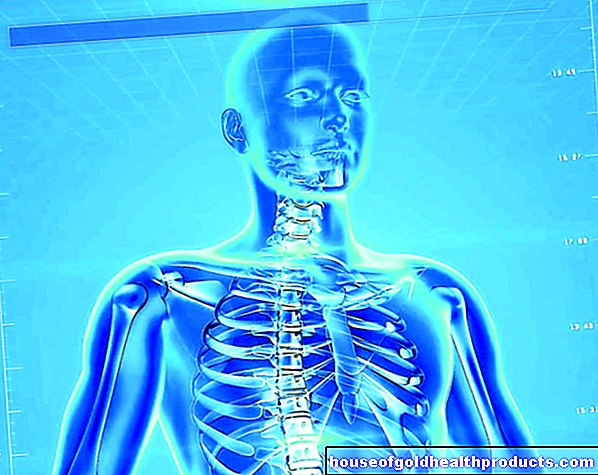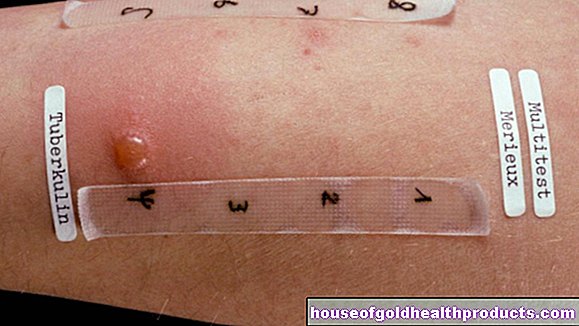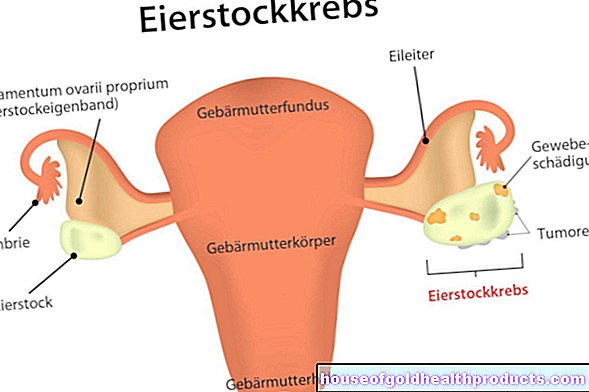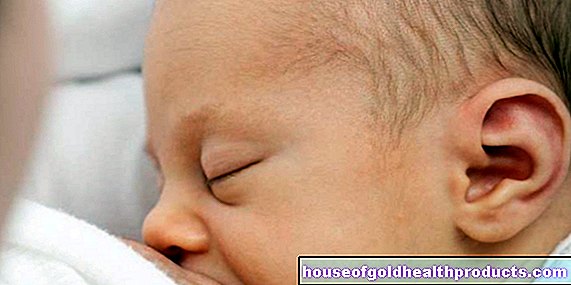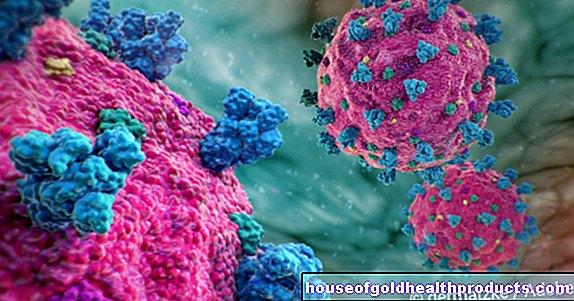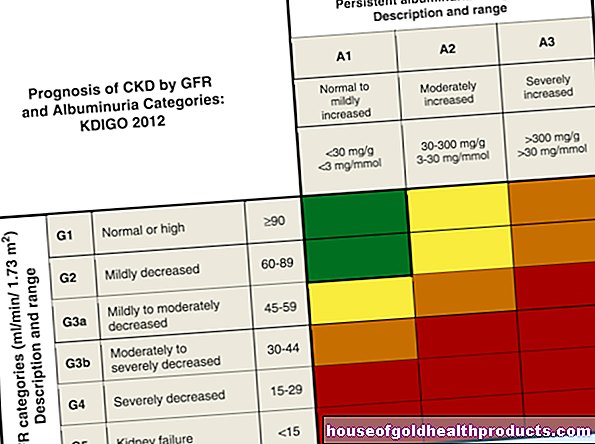traumatic brain injury
All content is checked by medical journalists.Traumatic brain trauma (trauma = injury) is a collective term for head injuries that lead to a functional disorder or injury to the brain. It usually arises from external violence, for example as a result of traffic or sports accidents. Doctors distinguish between different degrees of severity in traumatic brain injury (SHT for short). Find out everything you need to know about the various symptoms, examinations and treatment options for traumatic brain injury.
ICD codes for this disease: ICD codes are internationally recognized codes for medical diagnoses. They can be found, for example, in doctor's letters or on certificates of incapacity for work. F07S06T90S09
Traumatic brain injury: description
A traumatic brain injury results in an injury to the skull and brain. The brain is one of the most sensitive organs in the human body. It is the seat of consciousness, receives and processes not only sensory impressions, but also regulates numerous vital organ functions, such as breathing. If external violence - such as a fall or a blow to the head - results in a combined injury to the cranial bones and the brain, this is referred to as a traumatic brain injury.
Traumatic brain injury is a relatively common injury. In Germany around 250,000 people are affected by such a head injury every year, most of them men. Doctors differentiate between different degrees of severity and different forms of traumatic brain injury. The traumatic brain injury is severe in around five percent of those affected - some of the injured people need long-term care or even death. An example of a mild form of traumatic brain injury is a concussion.
concussion
All important information about this mild form of traumatic brain injury can be found in the article Concussion.
Traumatic brain injury: symptoms
The symptoms of a traumatic brain injury depend crucially on the extent of the injury. In general, the following symptoms can occur in a traumatic brain injury:
- headache
- dizziness
- Nausea, vomiting
- unconsciousness
- Visual disturbances
- Disorientation
- Memory gaps (amnesia), mainly related to the time around the accident
- coma
A traumatic brain injury can be divided into three degrees of severity:
- Minor cranial brain trauma (grade I): If unconsciousness occurs, this is limited to a maximum of 15 minutes. Usually there are no neurological consequences.
- Moderate craniocerebral trauma (grade II): The unconsciousness can last for up to an hour. Long-term effects can occur, but are not very likely.
- Severe head trauma (grade III): The unconsciousness persists for longer than an hour, neurological sequelae are to be assumed.
To assess the severity of the traumatic brain injury, doctors also use the so-called Glasgow Coma Scale. Points are awarded for the following criteria:
- Opening the eyes: Does it happen spontaneously, only when spoken to, in response to a painful stimulus, or not at all (e.g. when unconscious)?
- Body motor skills: Can the person concerned move when requested or is the ability to move restricted?
- Verbal ability to react: Does the person concerned seem oriented after the accident and answer questions sensibly?
The better and more spontaneously the person concerned reacts to the respective criterion, the higher the number of points awarded. Conversely, the lower the score, the more serious the injury. Doctors use the Glasgow Coma Scale (GCS Score), taking into account the symptoms, to assign the brain trauma to a degree of severity.
The symptoms of traumatic brain injury also depend on the type of injury. The following types of head and brain injuries are known:
- Bruised skull: headache or dizziness are possible, impaired consciousness or neurological symptoms do not occur. If the skull is bruised, the brain remains uninjured and has no dysfunction.
- Concussion (Commotio cerebri): A concussion corresponds to grade I of the GCS score and is therefore one of the mild traumatic brain injuries. If unconsciousness occurs, this can last from a few seconds to 15 minutes. The person concerned may no longer be able to remember the time during and after the accident (anterograde amnesia), and the memory gap may also extend to the time before the accident (retrograde amnesia). The cerebral commotio is accompanied by nausea and vomiting, dizziness and headache. In some cases, what is known as nystagmus occurs - a rapid, repetitive horizontal movement of the eyeballs. You can find more information about concussion here.
- Brain contusion (contusio cerebri): It leads to unconsciousness, which can persist for more than an hour to several days. Neurological symptoms that occur depend on the injured brain region. These include seizures, paralysis, respiratory or circulatory disorders, and coma.
- Brain squeezing (Compressio cerebri): In this brain trauma, the brain is squeezed either from the outside or by increased pressure from the inside, for example through bleeding or swelling of the brain. Severe headaches, dizziness, nausea and other neurological disorders, including deep unconsciousness, are possible signs.
- Skull fracture (fracture of the skull): Under certain circumstances, a gap in the skull bone can be felt or an indentation is visible. Doctors differentiate an open craniocerebral trauma, in which the brain is partially exposed, from a covered or closed head injury (the skull is not opened).
- Skull base fracture (skull base fracture): bruises in the area around the eyes, bloody discharge from the nose or ears can indicate a fracture of the skull base.
Traumatic brain injury: causes and risk factors
The skull bones surround the brain for protection. In the front area is the facial skull, consisting of the bony eye and nasal cavities as well as the upper and lower jaw. Most of the brain is surrounded by the back of the skull. At the base of the skull, which surrounds the brain from below, there is an opening as a passage for the spinal cord. The brain and spinal cord together form the central nervous system (CNS).
In most cases, an injury to these structures, i.e. a traumatic brain injury, is the result of an accident. Frequent causes are falls while doing sports without a hard hat, for example while cycling or skiing or at work. While a blow, fall or impact on the head is more of a blunt force, a traumatic brain injury can also be caused by perforating injuries. This means that the skull bone is broken through by high force and / or a sharp object.
It is estimated that one third of all traumatic brain injuries are caused by traffic accidents. About 30 percent of those affected show further injuries - doctors then also speak of a multiple trauma.
Traumatic brain injury: examinations and diagnosis
Often the course of the accident already indicates a possible traumatic brain injury, for example because the person concerned fell on their head. Often, witnesses or rescue workers can also provide the doctor with important information by describing the accident or providing information about the duration of the unconsciousness.
If a traumatic brain injury is suspected, the person concerned must be admitted to hospital. Here, trauma surgeons, orthopedists and neurologists usually work hand in hand to make a diagnosis. As part of a neurological examination, the doctor checks, among other things, whether the person concerned is approachable and oriented. At the same time, he pays attention to whether external injuries indicate a traumatic brain injury. In unconscious patients, among other things, the pupillary reaction to a light stimulus (also called light reaction or pupillary reflex) provides information on the extent of the brain injury.
With the help of imaging procedures such as an X-ray examination or computed tomography (CT), fractures of the skull bones and base of the skull can be easily identified. Injuries to the brain such as bruises, bruises or bleeding become visible as a result. If the CT does not show any obvious changes despite the symptoms, a magnetic resonance imaging (MRI) is usually carried out.
Traumatic brain injury: treatment
Treatment for traumatic brain injury depends primarily on the extent of the injury. Lighter forms, such as Grade I traumatic brain injury (a so-called concussion), usually do not require extensive treatment. Here the doctor recommends bed rest for a few days. In some cases, the patient remains in the hospital for observation for 24 hours. This is especially true with children. If symptoms of a traumatic brain injury increasingly appear during this period, consequences such as cerebral haemorrhage can be quickly identified and treated. Symptoms such as headaches can be relieved with appropriate pain relievers, for example paracetamol. Active ingredients such as metoclopramide help against nausea.
If there is a more serious traumatic brain injury, hospitalization is required in any case. If the patient is unconscious, the first treatment measures at the scene of the accident aim to secure the vital functions (such as circulation and breathing). The next steps in treatment depend on the type of injury. An open traumatic brain injury, but also partially covered skull fractures and cerebral hemorrhages, usually have to be treated by an operation.
For further treatment of severe traumatic brain injuries, admission to a special clinic or an early rehabilitation facility makes sense. In addition to specialists, a specialized team of physiotherapists, occupational therapists and speech therapists is available here. With their support, lost physical, mental and linguistic abilities should be trained and regained as early as possible.
Traumatic brain injury: consequences
It is difficult to make a general statement about the prognosis for a traumatic brain injury, as the consequences depend on the extent of the injury. Mild traumatic brain injuries (grade I) usually have no consequences. In the case of a severe traumatic brain injury, on the other hand, permanent restrictions and consequential damage can be expected. How the consequences of a traumatic brain injury manifest themselves also depends on the affected brain region. A brain injury can result in motor disorders such as flaccid or spastic paralysis, but mental impairments are also possible. Overall, younger patients have a better prognosis than older ones. Around 40 to 50 percent of those affected with severe traumatic brain injury die as a result.
Tags: stress pregnancy birth foot care




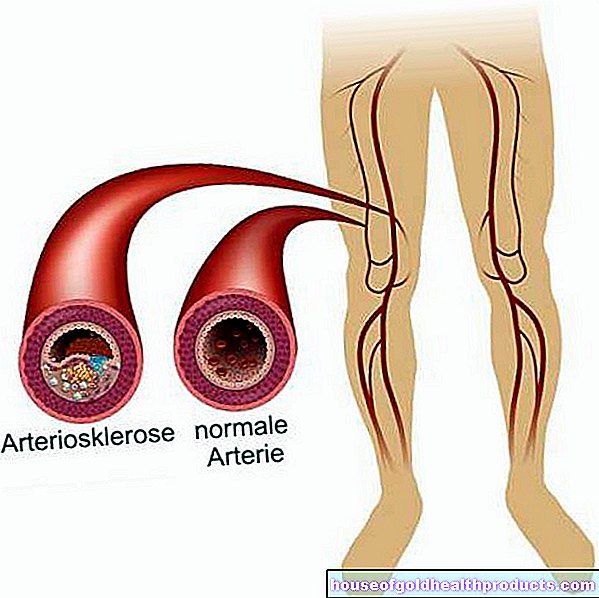

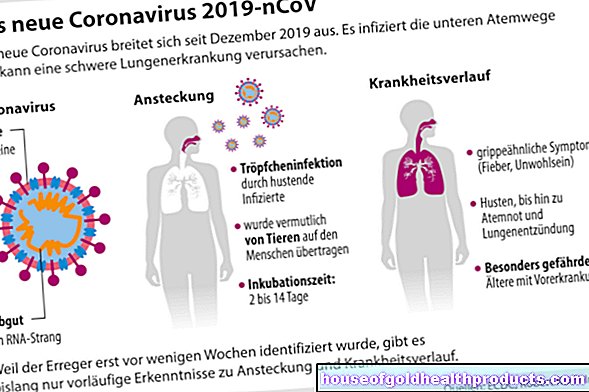



.jpg)

